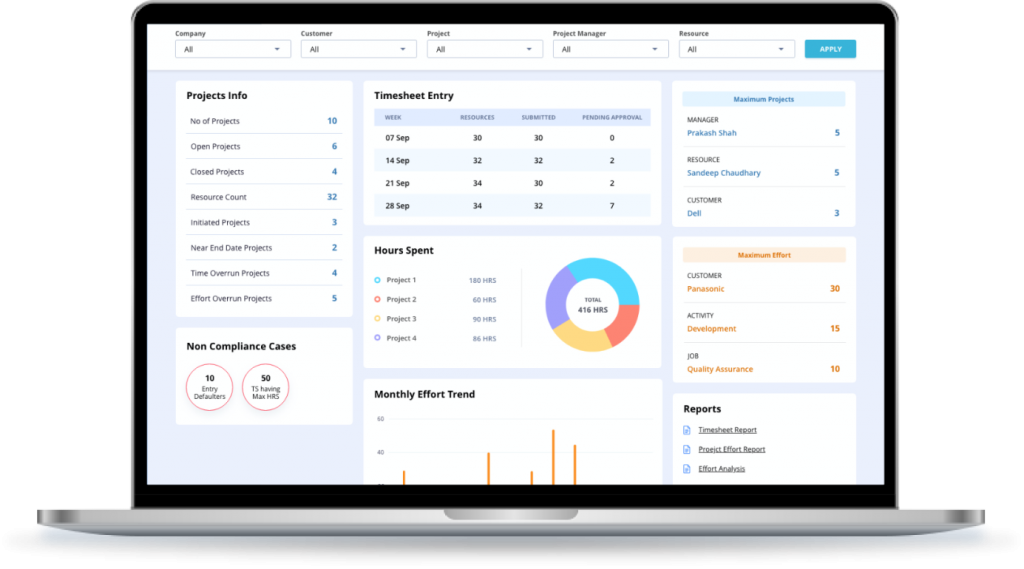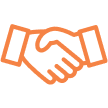Timesheet is a practice known to human resource management teams for a long time. The IT industry has been using timesheets for many years, but now other than IT are also adopting timesheets in their day-to-day functioning. Management teams across industries, from healthcare to hospitality, from manufacturing to retail, are asking for timesheet modules along with attendance management and payroll systems.
In the new hybrid work systems with remote work and WFA, timesheets have become even more significant for employee time tracking. Not just big organisations, even smaller organisations with about 11-200 employees are asking for it.
Let’s have a look, why this trend?
This article will give you a comprehensive study of all aspects of the timesheet module.
To start with..
What is timesheet management?
Timesheet is a practice of documenting the time spent by employees on various tasks assigned to them.
Many traditional organisation use Excel sheets to document and study the number of hours an employee has put on the job. It surely helps.
But that is just documenting. It worked in the past. But now, with ‘work from anywhere’ being adopted in all industries, the management is suddenly aware that just manual entry isn’t good enough. When people are working from home, it’s hard to monitor them, even more difficult to track the time spent on various tasks.
And that’s why many non-IT companies are now shifting to timesheet management software on the cloud.
Timesheet management is a practice which considers time as a resource.
It is run through a cloud software that enables time tracking. Enterprise HRMS solutions also have powerful timesheet modules. It shows the number of hours spent by an employee on a job. It also gives the details, how much time is spent on various individual tasks. Such details help management in analyzing the amount of time consumed on their projects, and help with accurate billing.
Modern HRMS solutions like OpportuneHR come with user-friendly mobile applications. The application runs on any device: Android or iOS. Such a geofencing enabled app can capture attendance anywhere, making it possible to capture real time attendance even for field force employees and Work From Home employees. What’s more, Opportune mobile app works even in the offline mode!

With such capabilities, now timesheet management is gaining ground in non-IT industries as well.
Difference between attendance management and timesheet management.
Attendance management is documentation of the clocking-in and clocking-out of an employee in the organisation. As the name suggests, it is a documentation of an employee’s presence on the job.
Timesheet management also includes, what activities he or she does on the job, and the amount of time spent on those activities and tasks. It can be monitored and analyzed on an hourly basis.
Importance of timesheets: Why should you embrace them in your business?
A Timesheet Management Software instills a sense of discipline and accountability in the workplace. It has far-reaching business implications. It changes the work culture and helps the organisation achieve better results. It also helps the employees, as their true working hours are documented.
Enhanced productivity: Because eight hours of work isn’t equal to eight hours of work.
While most employees follow the work hours rule, the real test of productivity lies in what work they do during these hours. Management teams in progressive organisations go beyond attendance management, they rigorously track the time spent on productive activities VS non-productive hours. And gain a competitive advantage.
Better task management and workforce planning.
This is where time management software makes a big difference. A timesheet module helps the management team in so many ways–
–Better scheduling of workforce resources. They know how much time is available to be utilized. They can monitor and spot underutilized human resources and can assign tasks to them. While any overworked employee can be taken care of.
–A timesheet is a blueprint of actual utilization of time. It helps in deciding if a department or work facility can take any add-on tasks.
— Timesheet management approach helps management to monitor the work done per hour. On the basis of a timesheet record, management can see which projects and tasks are consuming the most amount of time. They can take a decision to correct the allocation of time.

Accurate payroll: On a given date!
Payroll processing for a large number of employees is cumbersome. Different locations, different employment levels and overtime rates make it complex. Technology helps here. With timesheet software, there is no need to collate and upload data from various locations.
For example, in OpportuneHR time tracking is real time. Overtime is also calculated as per company policy, automatically. Manual payroll errors are eliminated. This helps the HR team to generate and disburse salaries on a given date.
All with a few clicks!
A payroll module enabled with timesheet management is doubly powerful.
Another important aspect: While biometric devices, face detection devices help in capturing attendance, a timesheet module helps the management in recognition of high – performance employees. Those who perform a task with high effectiveness in less time.

Accurate client Billing and vendor remuneration through timesheet management:
Many industries charge clients as per the time spent on various tasks done for them. IT and IT service industry is a prime example. Even in the service industry, time spent on a task is minutely calculated for billing purposes.
In such industries, timesheet have become central to any discussion on fees and remuneration.
In gig economy, where people work on projects, from remote locations and part-time, the timesheet helps the employer as well as the vendors both in ascertaining the true value of work.

Real time and real cost estimation:
Time is a resource. A highly paid employee doing a low-paying job often goes unrecognized. But time and cost analysis helps HR and the line manager to recognize such instances. It saves a good amount of money for the organisation.
When pitching for new business, or preparing tenders, past timesheets are a big advantage. An organisation can correctly estimate how much time is needed for performing certain tasks and how much value it deserves. It helps the management team to make practical decisions.
Project Management and cost control:
Any project involves many activities. And each activity costs an organisation. When the project is behind schedule, the losses are even more.
Time management plays a major role in such conditions. The continuous monitoring of time consumed on given tasks (Vis-à-vis the industry and organisational benchmark) helps the management to focus on truly important tasks.
Any unnecessary time consumed on trivial tasks can be recognized and corrected in good time. It makes sure that the cost of man and machine is controlled.
Not just this, timesheet management also helps in the calculation and control of administrative costs, wage costs, and any add-on costs which remain invisible otherwise.
Better process management:
A well-known management principles is: If you can’t measure something, you can’t improve it. In this age of data and measurement, the timesheet is a treasure. An intelligent manager can observe the time-data, compare it with high: performing teams and will arrive at improvements.
Even a few seconds of time saved in an activity in one department of the organisation can be adopted throughout the organisation and will save huge resources.
In this way, processes across organisation can be improved. Timesheet modules have shown such results in IT companies, and now the manufacturing and services industries are also discovering these AHA moments on a daily basis.

Timesheet Management Is Much More Than Time Tracking!
Timesheet module is as powerful as the managers using it. Those business leaders who take it seriously discover hidden insights.
With a good look at timesheet a smart manager can get insight into worker engagement. He or she can find client-wise and project-wise costs incurred by the organisation.
The management can actually make important organisational decisions on the basis of timesheet data.
A SME business owner felt a sense of pride that he knew everything going on in his company. But when he sat with his team to analyze the timesheet, his eyes opened up with insights hidden into his business. He discovered that a good amount of time and resources was going into pitching to the prospective clients. Even the highly paid senior technical staff were involved in the sales process.
He immediately hired a technical sales person. It freed time for the technical staff and productivity went up. With a technical person dedicated to sales, business proposals went out on time, increasing the success ratio.
Truly speaking a timesheet goes beyond time tracking. It can be considered a business application.
Conclusion:
Timesheet management is gaining importance in all industries. They are asking for timesheet module along with attendance management software because it helps the business leader to monitor the productive time VS non-productive time.
It helps an organisation to benchmark and compare the time taken by them in relation to industry averages.
Timesheets are much more than just time tracking. These are springboards for business insights. It helps in calculating the real cost of the services rendered to clients.
These are the reasons, timesheets are adopted now by all industries, from manufacturing units to diagnostic centers, advertising, and digital marketing agencies to consultancies, from hospitality to direct sales agencies.





